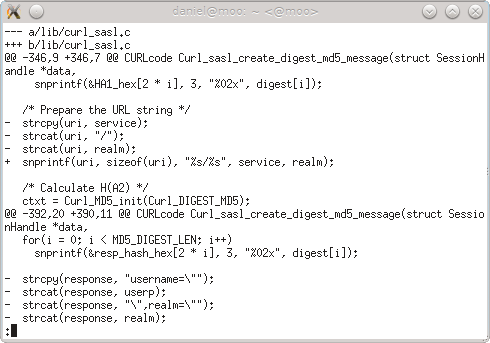 In this little piece I’ll explain why there won’t be any version 8 of curl and libcurl in a long time. I won’t rule out that it might happen at some point in the future. Just that it won’t happen anytime soon and explain the reasons why.
In this little piece I’ll explain why there won’t be any version 8 of curl and libcurl in a long time. I won’t rule out that it might happen at some point in the future. Just that it won’t happen anytime soon and explain the reasons why.
Seven point twenty nine, really?
We’ve done 29 minor releases and many more patch releases since version seven was born, on August 7 2000. We did in fact bump the ABI number a couple of times so we had the chance of bumping the version number as well, but we didn’t take the chance back then and these days we have a much harder commitment and determinism to not break the ABI.
There’s really no particular downside with having a minor version 29. Given our current speed and minor versioning rules, we’ll bump it 4-6 times/year and we won’t have any practical problems until we reach 256. (This particular detail is because we provide the version number info with the API using 8 bits per major, minor and patch field and 8 bits can as you know only hold values up to 255.) Assuming we bump minor number 6 times per year, we’ll reach the problematic limit in about 37 years in the fine year 2050. Possibly we’ll find a reason to bump to version 8 before that.
Prepare yourself for seven point an-increasingly-higher-number for a number of years coming up!
Is bumping the ABI number that bad?
Yes!
We have a compatibility within the ABI number so that a later version always work with a program built to use the older version. We have several hundred million users. That means an awful lot of programs are built to use this particular ABI number. Changing the number has a ripple effect so that at some point in time a new version has to replace all the old ones and applications need to be rebuilt – and at worst also possibly have to be rewritten in parts to handle the ABI/API changes. The amount of work done “out there” on hundreds or thousands of applications for a single little libcurl tweak can be enormous. The last time we bumped the ABI, we got a serious amount of harsh words and critical feedback and since then we’ve gotten many more users!
Don’t sensible systems handle multiple library versions?
Yes in theory they do, but in practice they don’t.
If you build applications they have the ABI number stored for which lib to use, so if you just keep the different versions of the libraries installed in the file system you’ll be fine. Then the older applications will keep using the old version and the ones you rebuild will be made to use the new version. Everything is fine and dandy and over time all rebuilt applications will use the latest ABI and you can delete the older version from the system.
In reality, libraries are provided by distributions or OS vendors and they ship applications that link to a specific version of the underlying libraries. These distributions only want one version of the lib, so when an ABI bump is made all the applications that use the lib will be rebuilt and have to be updated.
Most importantly, there’s no pressing need!
If we would find ourselves cornered without ability to continue development without a bump then of course we would take the pain it involves. But as things are right now, we have a few things we don’t really like with the current API and ABI but in general it works fine and there’s no major downsides or great pains involved. We simply do not have any particularly good reason to bump version number or ABI version. Things work pretty good with the current way.
The future is of course unknown and at some point we’ll face a true limitation in the API that we need to bridge over with a bump, but it can also take a long while until we hit that snag.
Update April 6th: this article has been read by many and I’ve read a lot of comments and some misunderstandings about it. Here’s some additional clarifications:
- this isn’t stuff we’ve suddenly realized now. This is truths and facts we’ve learned over a long time and this post just makes it more widely available and easier to find. We already worked with this knowledge. I decided to blog about it since it struck me we didn’t have it documented anywhere.
- not doing version 8 (in a long time) does not mean we’re done or that the pace of development slows down. We keep doing releases bimonthly and we keep doing an average of 30 something bugfixes in each release.







